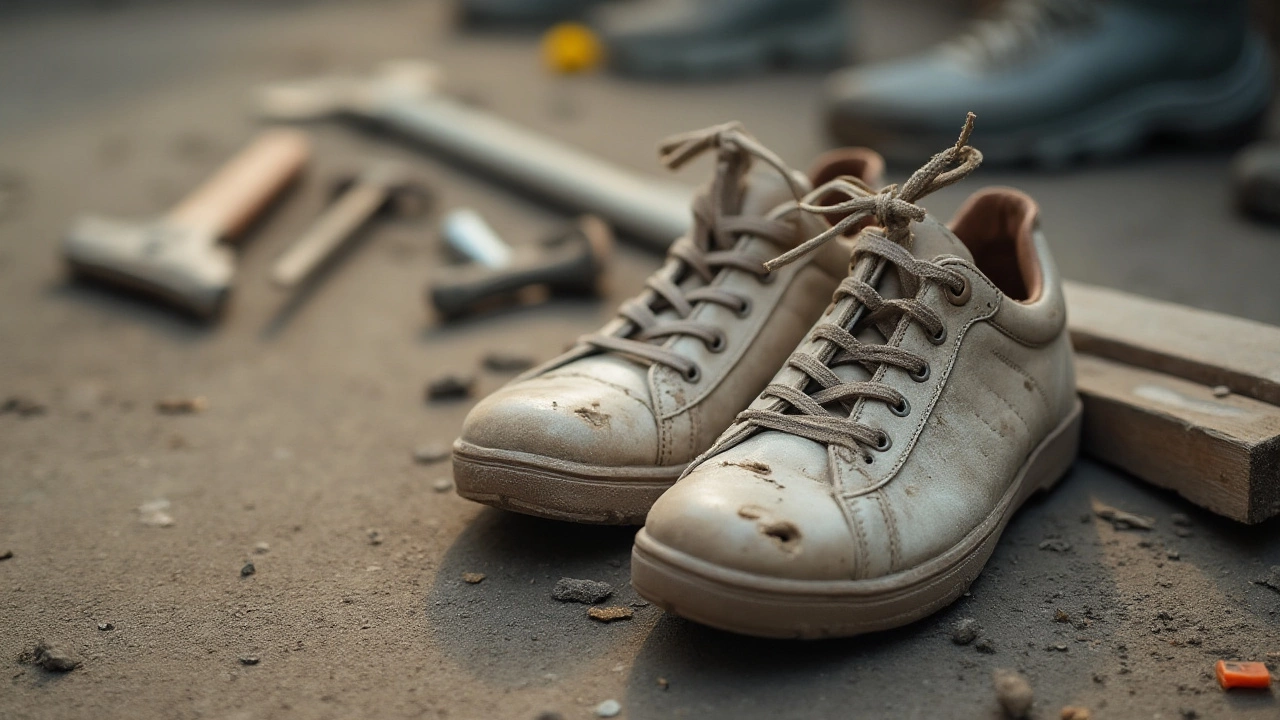Job Site Footwear: What to Wear for Safety and Comfort
If you spend hours on a construction site or in a warehouse, the shoes you wear matter. The right pair keeps you safe, reduces foot pain, and helps you stay productive. Below you’ll get straight‑forward advice on picking shoes that protect you and feel good all day.
Pick the Right Safety Features
First, check the safety rating. Look for steel toe or composite toe caps if you’re around heavy objects. Slip‑resistant soles are a must on wet or oily floors. A good grip stops you from sliding when you move heavy pallets or climb ladders. Also, make sure the shoe meets the CE or ASTM standards required for your job.
Breathability matters too. Many safety boots have leather uppers that can trap heat. Choose models with mesh panels or moisture‑wicking liners. They keep your feet dry and lower the chance of blisters. If you work in a hot environment, consider a lightweight composite toe boot – it’s lighter than steel and still passes safety tests.
Comfort for Long Shifts
Standing for eight hours or more can wear out any shoe. Look for cushioned midsoles, preferably EVA or PU foam, which absorb shock when you walk on hard surfaces. Arch support helps prevent foot fatigue, especially if you have a low or high arch. A removable insole lets you add custom orthotics if you need extra support.Fit is the biggest factor. Try shoes on at the end of the day when your feet are a bit swollen – that’s the size they’ll be at work. Walk around the store, climb on a step, and make sure there’s about a thumb‑width space at the toe. Laces should stay tight without cutting into the top of your foot.
Don’t forget the socks. Thick cotton socks can hold moisture, while wool or synthetic blends wick away sweat. A good pair of socks works hand‑in‑hand with your shoes to keep your feet fresh.
Maintaining your footwear extends its life. Clean off mud or grease after each shift, let them air dry, and check the soles for wear. Replace shoes when the tread wears down or the toe cap shows dents – safety can’t be compromised.
In short, the perfect job site footwear mixes safety, comfort, and durability. Choose a pair with proper toe protection, slip‑resistant soles, good cushioning, and a snug fit. Take care of them, and they’ll protect you for many projects to come.
-
Essential Footwear Tips: What Not to Wear on the Job Site
Choosing the right footwear for a job site is crucial for safety and efficiency. This article explores common footwear mistakes and provides practical advice on what types of shoes should be avoided. Learn why certain shoes pose risks and find tips on choosing the correct footwear for demanding environments. By understanding the importance of suitable work shoes, you can protect yourself from potential injuries and improve work performance.
